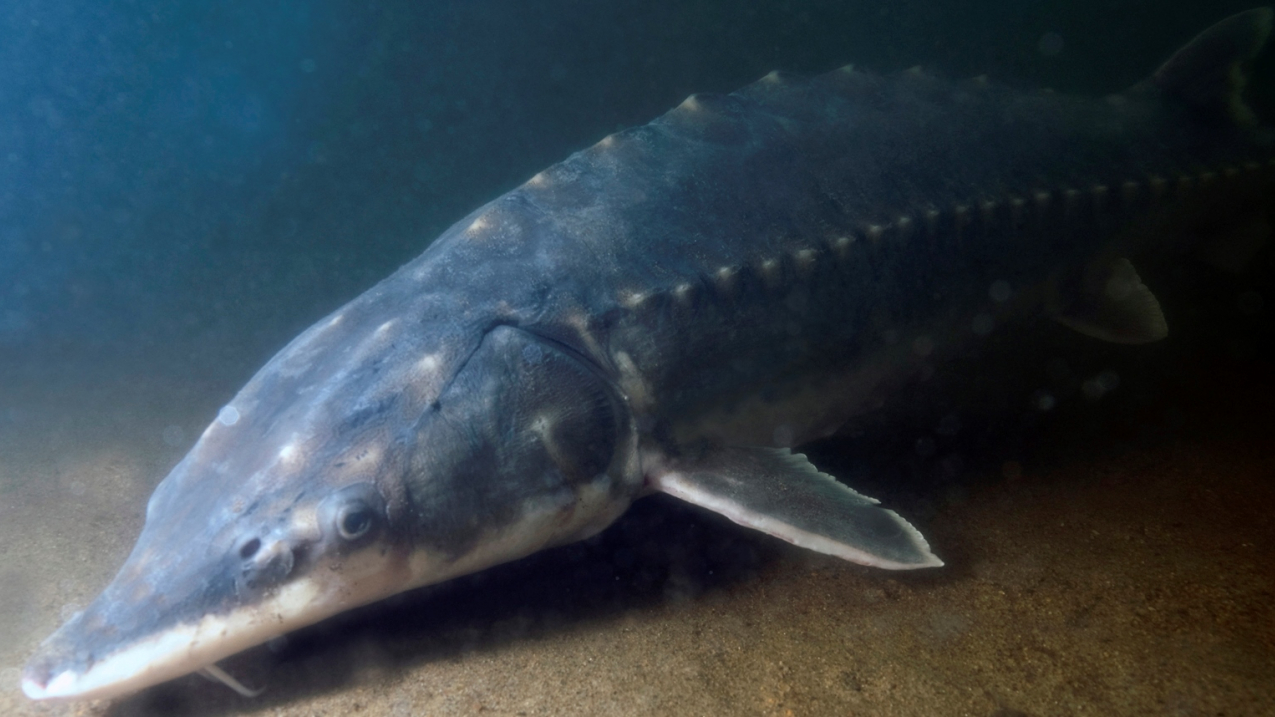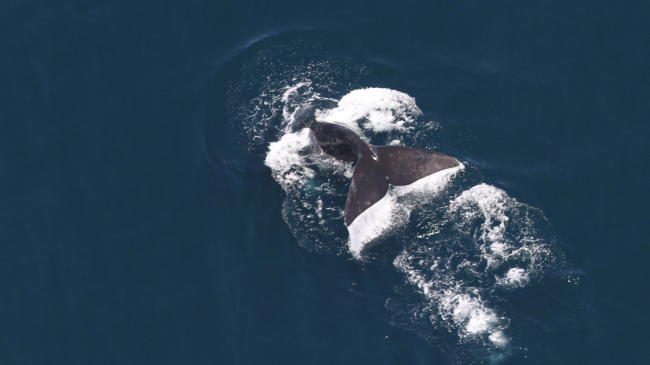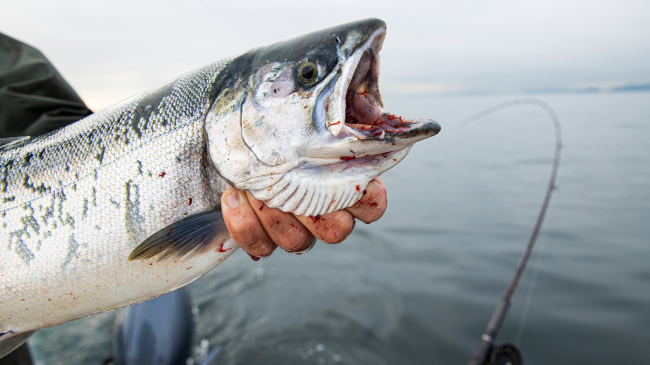
Atlantic sturgeon underwater (Image credit: NOAA)
NOAA Fisheries today announced two proposed rules to designate critical habitat for five distinct population segments of federally listed Atlantic sturgeon.
NOAA Fisheries is proposing to protect important river habitat for the threatened Gulf of Maine population segment and the endangered population segments of the New York Bight, Chesapeake Bay, Carolina and South Atlantic. NOAA Fisheries listed the Atlantic sturgeon under the Endangered Species Act in 2012.
“Protecting endangered and threatened species, including sturgeon, is one of our core missions,” said Eileen Sobeck, assistant NOAA administrator for fisheries. “Sturgeon need this habitat to recover, and these designations give us an important additional conservation tool. Fully recovering Atlantic sturgeon in the future will take partnerships with state and federal agencies, the scientific community, and the public, but designating critical habitat is another step in the right direction.”
The ESA requires that NOAA Fisheries designate critical habitat when a species is listed as threatened or endangered. Under the ESA, critical habitat is defined as geographic areas that are occupied by the species, and that contain features essential to the conservation of that species. Critical habitat can also include geographical areas that are not currently occupied by the species, but that are essential to its conservation.
Critical habitat does not create preserves or refuges. Instead, when a federal agency is carrying out funding or authorizing an activity that may affect the critical habitat, the federal agency works with NOAA Fisheries to avoid or minimize potential impacts to the species’ habitat. The activity of the federal agency may need to be modified to avoid destroying or adversely modifying the critical habitat.
The proposed designation of critical habitat does not include any new restrictions or management measures for recreational or commercial fishing operations.
The Atlantic sturgeon is an anadromous species that remains primarily in coastal and estuarine waters during much of the year, and travels to rivers to spawn or lay their eggs. Unlike some anadromous fish, sturgeon do not die after spawning and will return to spawn again in future years. They can grow up to 14 feet, weigh up to 800 pounds, and live up to 60 years.
Historically, Atlantic sturgeon were present in approximately 38 rivers in the United States from St. Croix, Maine to the Saint Johns River, Florida. Scientists identified 35 of those as spawning rivers. Atlantic sturgeon are currently present in approximately 32 of these rivers, and spawning occurs in at least 20 of them. Overfishing was one of the primary factors that led to the widespread decline in the abundance of Atlantic sturgeon. Atlantic sturgeon was valued particularly for its roe or eggs, which were in high demand as caviar.
“The proposed critical habitat identifies areas that provide important spawning and rearing grounds, plus migratory corridors for the Atlantic sturgeon,” added Sobeck. “By protecting the sturgeon’s habitat, we are helping preserve this important species for future generations of Americans.”
The Atlantic States Marine Fisheries Commission manages Atlantic sturgeon under a fishery management plan. In 1998, the Commission instituted a coast-wide moratorium on the harvest of Atlantic sturgeon, in effect until there are at least 20 protected age classes in each spawning stock (anticipated to take up to 40 years). NOAA Fisheries followed the commission moratorium with a similar moratorium for federal waters.
For the rule covering the Gulf of Maine, New York Bight, and Chesapeake distinct population segments, you may submit comments, identified by the NOAA-NMFS-2015-0107, by one of the following methods:
-
Electronic Submissions: Submit all electronic public comments via the Federal eRulemaking Portal. Go to http://www.regulations.gov/#!docketDetail;D=NOAA-NMFS-2015-0107. Click the “Comment Now!” icon, complete the required fields, and enter or attach your comments.
-
Mail: Kimberly B. Damon-Randall, Assistant Regional Administrator, Protected Resources Division, NMFS, Greater Atlantic Regional Office, 55 Great Republic Drive, Gloucester, MA 01930
-
Public Hearing: The July 21, 2016, public hearings will be held at the NMFS, Greater Atlantic Region Fisheries Office, 55 Great Republic Drive, Gloucester, MA 01930
For the rule covering the Carolinas and South Atlantic distinct population segments, you may submit comments, identified by NOAA-NMFS-2015-0157, by one of the following methods:
-
Electronic Submissions: Submit all electronic public comments via the Federal eRulemaking Portal. Go to www.regulations.gov/#!docketDetail;D=NOAA-NMFS-2015-0157 click the “Comment Now” icon, complete the required fields, and enter or attach your comments.
-
Mail: Assistant Regional Administrator, Protected Resources Division, NMFS, Southeast Regional Office, 263 13th Avenue South, St. Petersburg, FL 33701
-
Public Hearing: The June 20, 2016, public hearing will be held at the Georgia Department of Natural Resources, Coastal Regional Headquarters, 1 Conservation Way, Brunswick, Georgia 31520. The June 21, 2016 public hearing will be held at the South Carolina Department of Natural Resources, Marine Resources Office, 217 Ft. Road, Charleston, SC 29412. The June 23, 2016 public hearing will be held at the Crystal Coast Civic Center, 2nd Floor, 3505 Arendell St, Morehead City, NC 28557
NOAA’s mission is to understand and predict changes in the Earth's environment, from the depths of the ocean to the surface of the sun, and to conserve and manage our coastal and marine resources. Join us on Twitter, Facebook, Instagram and our other social media channels.
Contact:
Jennifer Goebel, 978-281-9175
Allison Garrett, 727-551-5750




